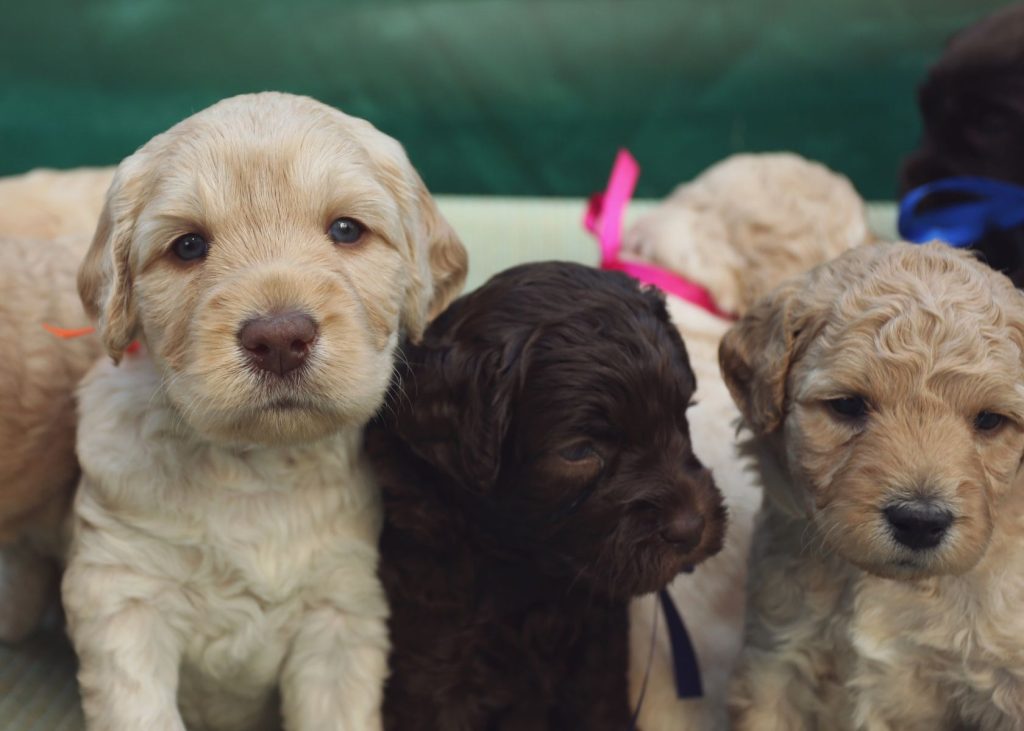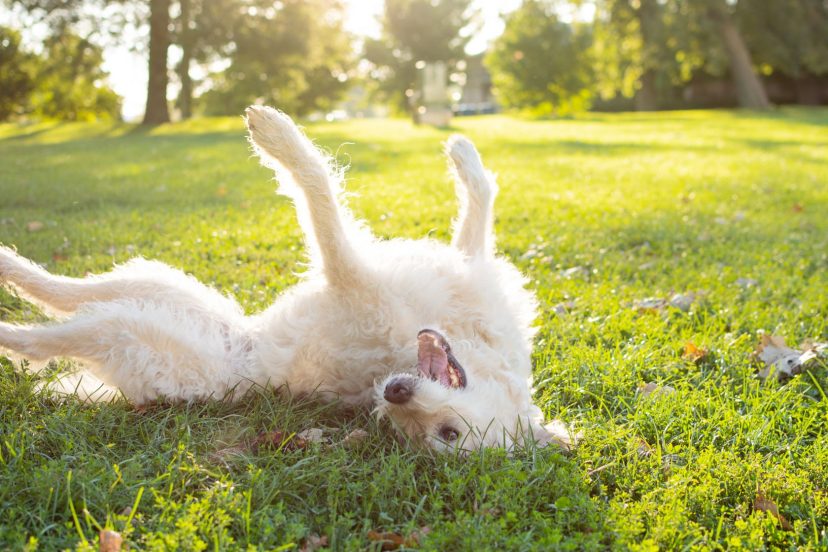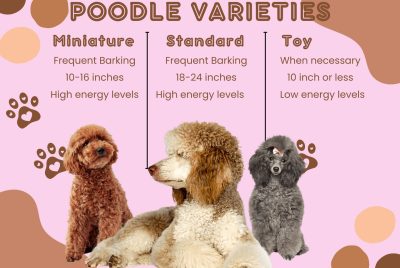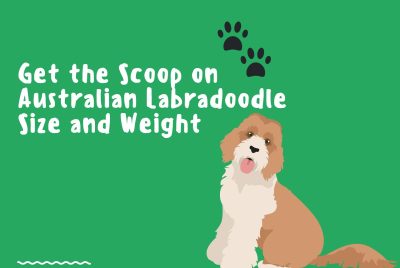Do Labradoodles Shed?
Labradoodles, the delightful crossbreed between Labrador Retrievers and Poodles, have captured the hearts of dog lovers worldwide. With their affectionate personalities, intelligent nature, and often hypoallergenic coats, it’s no wonder these furry companions have become a popular choice for families. However, one question that often arises among prospective Labradoodle owners is: “Do Labradoodles shed?”
Shedding is a natural process for dogs, but the amount and frequency of shedding can vary greatly depending on the breed, coat type, and individual factors. For many pet owners, excessive shedding can be a concern, as it can lead to unwanted hair around the house and potential allergic reactions.
Labradoodles, being a mixed breed, have inherited traits from both parent breeds, which can influence their shedding tendencies.
Understanding the shedding characteristics of Labradoodles is crucial for potential owners who want to make an informed decision about whether this breed is the right fit for their lifestyle and preferences.
In this comprehensive article, we will delve into the various aspects of Labradoodle shedding, exploring factors such as generation, coat type, individual variations, and grooming techniques.
Understanding Shedding in Dogs
Before looking into the specifics of Labradoodle shedding, it is essential to understand the concept of shedding in dogs and the factors that influence it.
Shedding, also known as molting, is the process by which dogs periodically lose old or damaged hair from their coat. This natural phenomenon occurs to make way for new hair growth and maintain a healthy coat. The amount and frequency of shedding can vary significantly among different dog breeds and individuals.
Several factors can affect shedding in dogs, including:
- Breed: Some breeds are known to shed more than others due to their genetic makeup and coat characteristics.
- Coat type: Dogs with double coats (an undercoat and an outer coat) typically shed more than those with single coats.
- Season: Many dogs experience increased shedding during seasonal changes, particularly in the spring and fall, as their bodies adapt to temperature fluctuations.
- Health: Certain health conditions, such as hormonal imbalances, allergies, or nutritional deficiencies, can lead to excessive shedding.
Shedding can be a concern for pet owners for several reasons. Excessive shedding can lead to an accumulation of hair around the house, which can be challenging to clean and potentially trigger allergic reactions in some individuals.
Additionally, excessive shedding may be an indication of an underlying health issue that requires veterinary attention.
Do Labradoodles Shed?
Now, let’s address the main question: Do Labradoodles shed? The answer is not a simple yes or no, as shedding tendencies in Labradoodles can vary depending on several factors.
In general, Labradoodles are considered moderate to low shedders compared to many other breeds. However, their shedding levels can range from minimal to moderate, depending on factors such as generation, coat type, and individual variations.
Labradoodles are crossbred, and their shedding characteristics are influenced by the inherited traits from their parent breeds, the Labrador Retriever and the Poodle. Labrador Retrievers are known to shed moderately, while Poodles are considered minimal shedders due to their single, curly coat.
Shedding in Different Generations of Labradoodles
One of the key factors that influence shedding in Labradoodles is their generation. Labradoodles are categorized into different generations based on their breeding lineage, and each generation can exhibit varying shedding tendencies.
F1 Labradoodles (First Generation)
F1 Labradoodles are the result of breeding a Labrador Retriever with a Poodle. These first-generation Labradoodles typically inherit a coat that is a blend of both parent breeds. While they may shed less than a purebred Labrador Retriever, F1 Labradoodles can still shed moderately, especially during seasonal changes or periods of increased stress.
F1B Labradoodles (First Generation Backcross)
F1B Labradoodles are created by breeding an F1 Labradoodle back to a Poodle. This breeding process aims to increase the Poodle influence in the offspring, potentially reducing shedding levels. F1B Labradoodles often shed minimally, as they have a higher percentage of the Poodle’s hypoallergenic coat.
Multigenerational Labradoodles
Multigenerational Labradoodles, also known as Australian Labradoodles, are the result of breeding two Labradoodles together over multiple generations. These Labradoodles can exhibit a wide range of shedding levels, depending on the specific breeding lines and coat types involved.
Australian Labradoodles
Australian Labradoodles are a distinct breed developed in Australia by selectively breeding Labradoodles over multiple generations. These Labradoodles are known for their consistent coat types and predictable shedding levels, often being low to minimal shedders due to the careful breeding practices employed.
Coat Types and Shedding in Labradoodles

Another crucial factor that influences shedding in Labradoodles is their coat type. Labradoodles can have different coat types, each with its shedding characteristics.
Fleece Coat
Labradoodles with a fleece coat are typically low to moderate shedders. The fleece coat is soft, wavy, and often has a woolly texture. While it does shed, the shedding is usually minimal and less noticeable compared to other coat types.
Wool Coat
Labradoodles with a wool coat are considered minimal shedders. The wool coat is tightly curled and resembles the Poodle’s coat. These coats tend to trap loose hair within the curls, resulting in minimal shedding and making them a popular choice for those with allergies.
Hair Coat
Labradoodles with a hair coat are more likely to shed moderately. The hair coat is straighter and more similar to the Labrador Retriever’s coat. While not as excessive as some other breeds, Labradoodles with a hair coat may shed more than those with fleece or wool coats.
Comparison of Shedding Levels Across Coat Types
In general, Labradoodles with wool coats are the least likely to shed, followed by those with fleece coats. Labradoodles with hair coats tend to shed the most among the different coat types. However, it’s important to note that individual variations can still occur within each coat type.
Puppy Shedding in Labradoodles
Many prospective Labradoodle owners wonder if their furry companions will shed as puppies. It’s essential to understand that puppy shedding can differ from adult shedding patterns.
Do Labradoodle Puppies Shed?
Yes, Labradoodle puppies do shed, but the amount of shedding can vary depending on their coat type and individual factors. Puppies go through a coat transition period as they mature, and some shedding is expected during this time.
Understanding Puppy Coat Changes
Labradoodle puppies are born with a soft, fluffy coat known as the “puppy coat.” As they grow older, this puppy coat gradually sheds and is replaced by their adult coat, which can have a different texture and shedding characteristics.
Shedding During Coat Transition Periods
During the transition from puppy coat to adult coat, Labradoodle puppies may experience increased shedding. This shedding process often occurs between 6 to 12 months of age, but the exact timing can vary from one puppy to another. It’s important to be patient and maintain regular grooming during this period to help manage the shedding.
Managing Shedding in Labradoodles
While Labradoodles are generally considered moderate to low shedders, some several techniques and strategies can help minimize shedding and keep their coats in optimal condition.
Grooming Techniques
Proper grooming is essential for managing shedding in Labradoodles. Here are some effective grooming techniques:
- Brushing: Regular brushing helps remove loose hair and distribute oils throughout the coat, reducing shedding. Brush your Labradoodle at least once a week, and more frequently during shedding seasons.
- Bathing: Bathing your Labradoodle with a high-quality, moisturizing shampoo can help reduce shedding by keeping the coat healthy and preventing tangles or mats, which can cause increased hair loss.
- Professional Grooming: Seeking the services of a professional groomer can be beneficial, especially for Labradoodles with more challenging coat types. Groomers can perform specialized techniques like de-shedding treatments and proper trimming to minimize shedding.
Diet and Supplements
A balanced and nutrient-rich diet can contribute to a healthy coat and potentially reduce excessive shedding. Consult with your veterinarian or a canine nutritionist to ensure your Labradoodle is receiving the appropriate nutrients for their coat and overall well-being.
Additionally, certain supplements, such as omega-3 fatty acids, can support coat health and minimize shedding.
Environment and Lifestyle Factors
Environmental factors and your Labradoodle’s lifestyle can also impact shedding levels. Providing a stress-free environment, maintaining a consistent grooming routine, and ensuring your furry companion gets adequate exercise and playtime can all help minimize shedding.
Individual Variations and Health Considerations

While general shedding patterns can be observed in Labradoodles, it’s important to remember that individual variations can occur. Some Labradoodles may shed more or less than others, even within the same generation or coat type.
Genetic Variations and Shedding
Genetic variations can play a role in shedding levels. Even within a litter of Labradoodle puppies, some may inherit a coat that sheds more or less than their siblings. Responsible breeders strive to produce litters with consistent shedding characteristics, but individual variations can still arise.
Health Conditions Affecting Shedding
Certain health conditions, such as hormonal imbalances, skin allergies, or nutrient deficiencies, can lead to excessive shedding in Labradoodles. If you notice an abnormal increase in shedding or other concerning symptoms, it’s essential to consult with a veterinarian for a proper diagnosis and treatment plan.
Importance of Responsible Breeding Practices
To ensure predictable shedding characteristics and overall health in Labradoodles, it is crucial to support responsible breeding practices.
Reputable breeders carefully select their breeding stock, conduct necessary health screenings, and maintain accurate records to produce healthy and stable Labradoodle litters.
Choosing a puppy from a responsible breeder can increase the likelihood of obtaining a Labradoodle with the desired shedding level and overall well-being.
Conclusion
The question of whether Labradoodles shed or not has a multifaceted answer. While Labradoodles are generally considered moderate to low shedders, their shedding levels can vary depending on factors such as generation, coat type, individual variations, and health conditions.
F1 Labradoodles may shed moderately, while F1B and multigenerational Labradoodles often shed minimally. Australian Labradoodles are bred to have consistent coat types and predictable shedding levels, often being low to minimal shedders.
Coat types play a significant role, with wool coats shedding the least, followed by fleece coats, and hair coats shedding the most. Labradoodle puppies do shed during their coat transition period, but the shedding typically decreases as they reach adulthood.
Proper grooming, a balanced diet, and a suitable environment can help manage shedding in Labradoodles. Individual variations and health conditions can impact shedding levels, emphasizing the importance of responsible breeding practices.
Ultimately, whether a Labradoodle sheds minimally or moderately, their friendly dispositions, intelligence, and versatility make them excellent companions for many families.
By understanding the factors influencing shedding and implementing effective management strategies, Labradoodle owners can enjoy the company of these lovable furry friends while minimizing the impact of shedding in their homes.
As with any pet ownership decision, it is crucial to research thoroughly, consult with reputable breeders or rescues, and consider your lifestyle and preferences before welcoming a Labradoodle into your family.
With the right knowledge and preparation, you can ensure a harmonious and fulfilling relationship with your furry companion, regardless of their shedding tendencies.




